



Google used anonymous location data it collects from Android phones across the world to build global indices of how much people have stopped moving around. Here what it found out about India.
Google mobility data suggest that post-lockdown, India saw a 77 percent fall in public mobility to places like retail restaurants, cafes, shopping centres, theme parks, museums, libraries, and movie theatres as compared to the corresponding five-week period from January 3 to February 6.
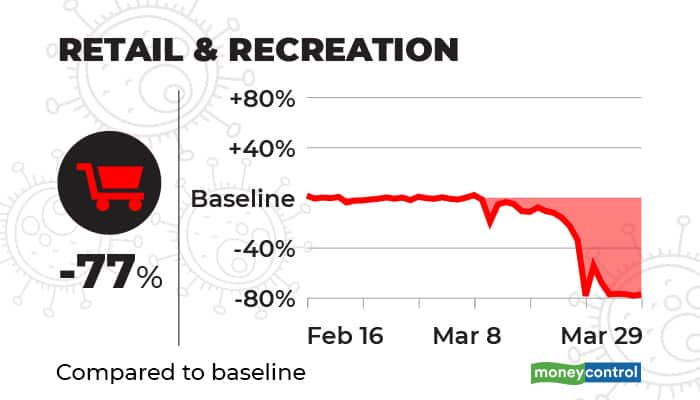
Even transportation mobility trends seems to stand still, down over 70 percent from the corresponding period. It includes places like public transport hubs such as subway, bus and train stations.
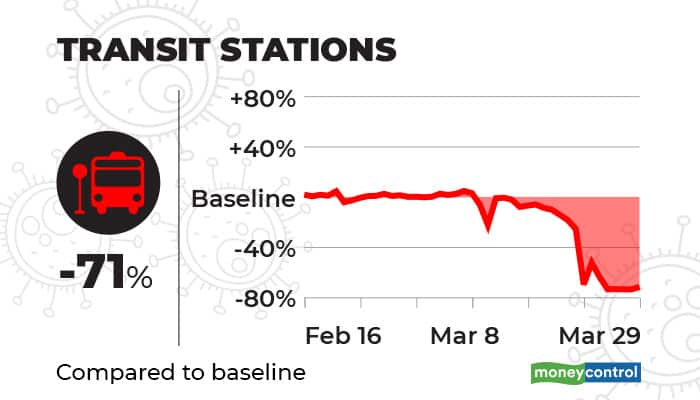
It seems that daily consumption grocery stores and pharmacy footfalls fell drastically. Chart below shows mobility trends for places like grocery markets, food warehouses, farmers markets, specialty food shops, drug stores, and pharmacies.

Mobility trends for places like national parks, public beaches, marinas, dog parks, plazas and public gardens too witness a fall.
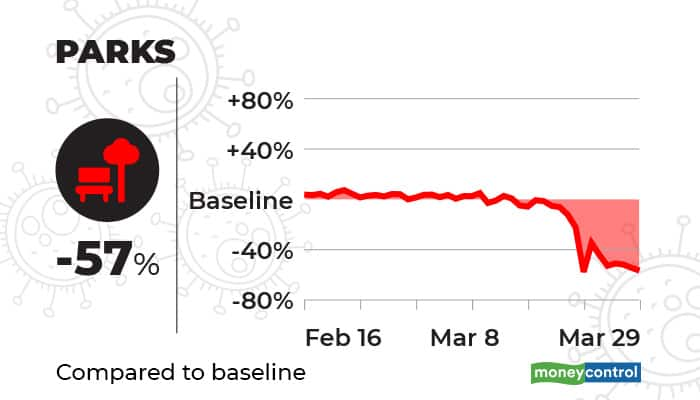
Due to the lockdown, majority of the staff were working from home to ensure social distancing.
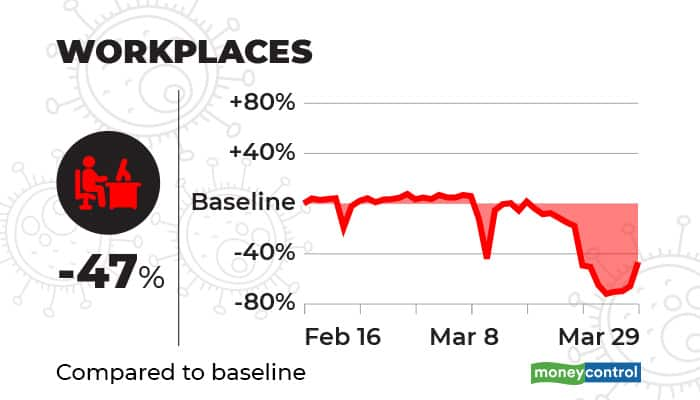
Not surprisingly, during the lockdown places of residence witnessed a surge in public availability by 22 percent in the period under review.
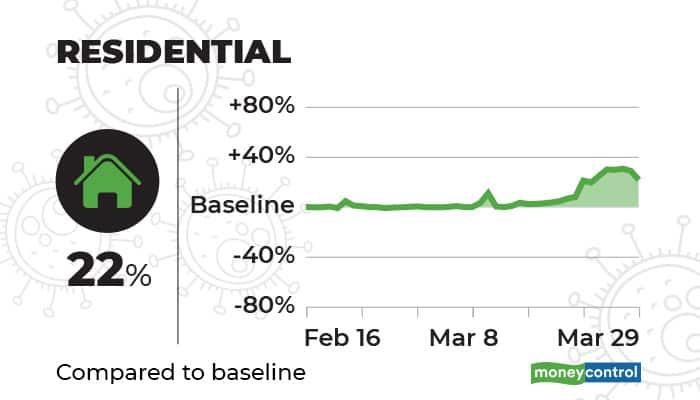
The report includes categories that are useful to social distancing efforts as well as access to essential services.
Discover the latest Business News, Sensex, and Nifty updates. Obtain Personal Finance insights, tax queries, and expert opinions on Moneycontrol or download the Moneycontrol App to stay updated!
Find the best of Al News in one place, specially curated for you every weekend.
Stay on top of the latest tech trends and biggest startup news.